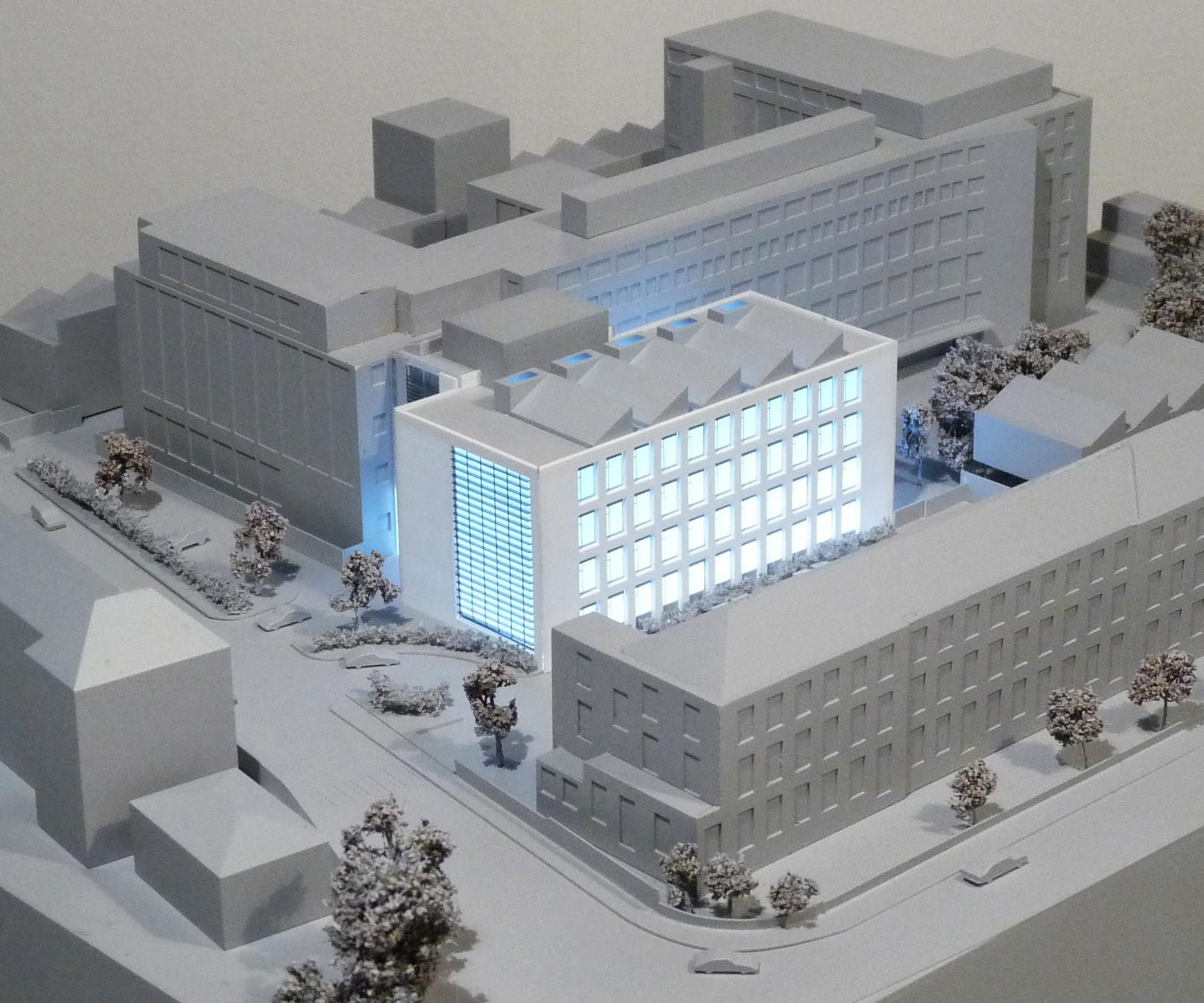
Submitted by Administrator on Wed, 13/08/2014 - 13:19
CSIC has started work to create the Centre’s first-ever live laboratory on site at the Department of Engineering at the University of Cambridge.
Pioneering sensing technologies are being installed in the infrastructure of the new four-storey James Dyson Building for Engineering, due to open in 2015.
Dr Mohammed Elshafie, one of the CSIC team involved, said: “We have been developing and installing fibre optic sensing all over London and the UK, throughout Europe and in the US, but rarely had the opportunity to showcase our work in Cambridge. This is a chance to populate a new building in our own back yard with a range of sensing technologies so, when CSIC is working with students and industry, we can demonstrate our sensing devices operating in real time. Installing CSIC sensing technologies transforms the building from a passive block of material into a living creature. We will be able to ask the building how it is feeling and the building will be able to reply.”
The extension project is already underway and the CSIC team are currently on site. Morgan Sindall, the contractor, has been working with CSIC to instrument a number of the foundation piles with a range of fibre optic sensors before they are embedded into the concrete. These sensors will provide useful data including the temperature gradient of the piles, the temperature of the concrete as it is setting and the strain within the pile as the load upon it changes. As the building progresses further, CSIC technologies will be applied which will help provide a picture of how the building is ‘feeling’ and ‘behaving’.
The 'live laboratory' will be a unique opportunity for students, researchers and industry to benefit from the data collected from the sensors. Dr Pasquale Ponterosso, Project Manager of the CSIC deployments on the James Dyson Building said: "This is CSIC's chance to showcase and demonstrate all of our technologies in our own building. It is also a chance for us to gather data in order to help validate current design principles with a view to making more sustainable efficiencies in the design and construction of future infrastructure."
Dr Elshafie said: “It’s very exciting and certainly has numerous benefits. This will be the first time the team has been able to install our technology without having to deploy a group of people at 4am in the morning. As the project is happening at our own university, we can work during office hours.”
A ground breaking ceremony for the James Dyson Building is planned for Tuesday 18 November. It is hoped that James Dyson and/or his family will attend the event along with Professor Sir Leszek Borysiewicz, Vice Chancellor of the University of Cambridge and Professor David Cardwell, Head of the Department of Engineering.
Keep checking the CSIC website for updates on the building of CSIC’s live laboratory.
